Seven new speakers were featured during this year’s IDEAS Collide Showcase (IDEAS), held during the SEMA Show in Las Vegas, NV, as part of the Society of Collision Repair Specialists (SCRS) Repairer Driven Education Series.
The IDEAS event, first held in 2018, provides a platform for sharing innovative ideas during multiple fast-paced presentations.
Aaron Schulenburg, SCRS executive director, said IDEAS Collide is designed to challenge speakers and stimulate the audience with concepts that rattle the status quo and ambitious ideas that could have a transformative effect on the industry, and the businesses within it.
“Each speaker was challenged to give you 10 minutes of their belief, their passion, their best story and narrative of what they want to see in this industry,” Schulenburg said during the event.
“IDEAS represents a rare opportunity to engage with groundbreaking insights that inspire both personal growth and industry-wide transformation,” said Michael Bradshaw, vice chairman at SCRS and a past IDEAS presenter. “It’s not just about fixing cars; it’s about envisioning the future of how we work and operate.”
The End of the Single-Store Generalist Body Shop
Cole Strandberg, managing director of FOCUS Investment Banking and host of the Autobody News Collision Vision podcast, shared what he referred to as his controversial view about the era of the single-store generalist body shop coming to an end. While he said it is not dying tomorrow, he noted the current environment is disrupting an industry that has been around for over a century.
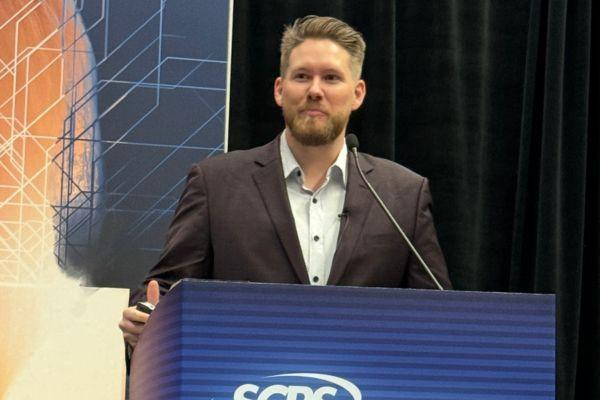 Cole Strandberg.
Cole Strandberg.
He attributes this to increasing vehicle complexity, the technician shortage, insurance relationships, competition and other industry issues.
At the same time, he said there is a massive opportunity available.
“Depending on their financial resources, skills and strategic vision, operators have three viable paths forward: specialize, scale or sell,” explained Strandberg. Each option comes with its own set of advantages and challenges.
Strandberg acknowledged that collision repairers want to improve and grow their businesses.
“The only thing you should not be doing is nothing,” he said. “I think between specializing, scaling and selling or a combination of all the above, there is an extremely unique opportunity here to take advantage and build something special.”
Conquering Division in the Collision Repair Industry
Jill Tuggle, executive director of the Auto Body Association of Texas (ABAT), discussed the division in the collision industry and how it can be overcome in her presentation “UN-Divide and Conquer.”
 Jill Tuggle.
Jill Tuggle.
Tuggle provided an overview of the industry since the 1980s, when she said the direct repair program (DRP) model became commonplace. By the 1990s, some shops weren’t as supportive of the model as they were initially.
“We were seeing a lot of division start to happen in our industry,” she noted.
Some of this was attributed to shops that were afraid if they talked to one another, they would violate antitrust laws.
“That's when we ended up on our own islands,” she recalled.
Tuggle said it’s time to address the longstanding divisions that have hindered collaboration and education in the industry for decades.
She mentioned that state associations are proactively bridging these gaps by fostering communication, sharing best practices and advocating for higher industry standards.
“Collision repair businesses can play a vital role in reshaping the industry’s future, ultimately promoting unity and driving positive change for everyone,” she said.
Tuggle recommends engaging with local associations and participating in collaborative initiatives.
“The key to us being successful in this industry is going to be community and not division,” she said. “Together, we can overcome divisiveness and build a stronger, more resilient collision repair community.”
Sustainability’s Role in Collision Repair
Christian Ruecker, vice president of sales for DEKRA North America, discussed the role of sustainability in every layer of collision repair.
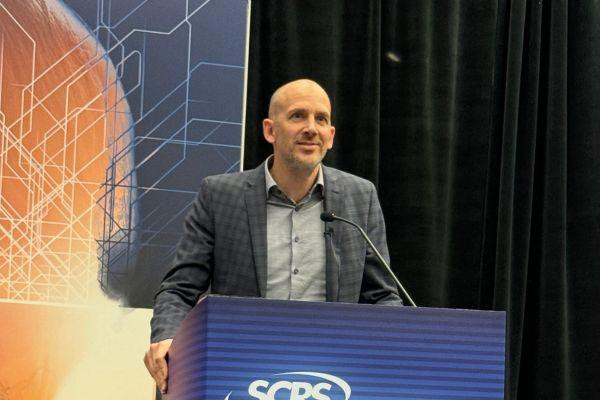 Christian Ruecker.
Christian Ruecker.
Ruecker said sustainability has long been intrinsic to successful businesses; however, some see it as a political climate-driven idea.
During his talk, Ruecker highlighted examples showcasing how sustainable business practices contribute to longevity and profitability and can benefit all industry stakeholders.
Ruecker explained that in Europe, companies are now required to report on their sustainability efforts as part of the EU Corporate Sustainability Reporting Directive (CSRD).
He encouraged collision repair businesses to consider how they are addressing sustainability through an environmental, social and corporate governance (ESG) framework.
“Collision centers can embrace sustainability through energy-efficient lighting, water recycling systems, eco-friendly paints and sustainable supply chain partnerships, creating cost savings and a healthier workplace while reducing environmental impact,” said Ruecker. “By integrating these practices, shops can achieve operational efficiency and align with modern customer expectations for eco-conscious service.”
With the recent cyber-attacks in the automotive world, Ruecker said it should become the norm to incorporate data governance and cybersecurity to protect customer information and ensure responsible practices. Additionally, community-focused initiatives, such as repairing and donating a vehicle to those in need, are great ways for collision centers to contribute positively to society and build stronger communities.
“Sustainability is just a word, but running a sustainable business is a choice,” Ruecker noted.
The Evolution of the Collision Repair Business
The founder of Crunchit Financial Services, Bill Park, delivered the next presentation, “Peak Blue-Collar: Evolution of Collision Repair Shops into White-Collar Enterprises.”
 Bill Park.
Bill Park.
Park said the collision industry is facing a loss of traditional expertise and anticipated succession, which can lead to leadership gaps.
“The future workforce is balancing a white-collar transformation with technology-driven desires, a focus on flexibility and purpose, and demand for continuous learning,” he noted. “Peak blue-collar is a launchpad to embracing the future and understanding how to navigate the divide.”
He explained that repairers are no longer just competing with the body shop down the street. Instead, they are competing with corporations that have installed processes and procedures using data and analytics.
Park said there's a movement going on in the industry focused on the merging of idea of blue-collar and white-collar thinking.
He encourages business owners to take the roots of their blue-collar heritage and find the white-collator opportunities in terms of strategy, structure and financial opportunities.
He said it’s no longer about fixing cars. Instead, it's about building empires.
“That's how you get off that island by yourself and start building those empires because it can be done,” he advised. “Take some risk, seek out open minds and listen to people who are doing well and have accomplished things.”
Reinvesting in Your Auto Body Shop
Spanesi-Americas Aftersales Director Jeramy Holloway shared insight on earning a return on capital spending. According to Holloway, a necessary aspect of delivering high-quality repairs is the ongoing process of reinvesting back into the business and purchasing equipment.
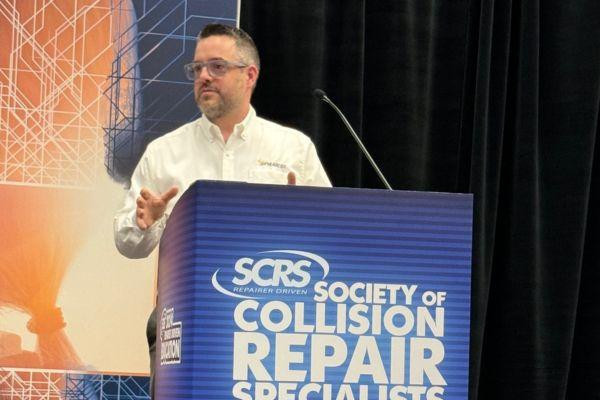 Jeramy Holloway.
Jeramy Holloway.
To help determine if the equipment is the best fit for the business, he suggested evaluating its speed, cost and quality.
Holloway advised repairers to determine why a purchase is being made, whether it’s for an OEM certification program or to upgrade to a new model.
He also encouraged attendees to “be a master of your own product” by purchasing equipment that will ensure the vehicle is fixed correctly for customers.
“We’re in the collision business, and what we're actually doing is selling a product,” noted Holloway. “That product is properly repaired vehicles.”
The key to earning a return on investment with an equipment purchase, according to Holloway, is understanding how to properly implement the equipment into the repair process.
He discussed the difference between training and implementation. “Training is the process of teaching while implementation is the process of putting that training into action,” he explained.
Overall, he stressed the importance of using a process.
“Opinions don’t tell us when to use the tool; the process does,” he said.
Politics of Collision Repair
In his presentation, Wayne Weikel, vice president of state government affairs at the Alliance for Automotive Innovation, discussed the fine print of repair politics.
 Wayne Weikel.
Wayne Weikel.
He encouraged attendees to participate in the political process and quoted Plato: “If you do not take an interest in the affairs of your government, then you are doomed to live under the rule of fools.”
Weikel said it is not just a matter of being interested in politics, but it’s also important to understand the motivations influencing policy work in the local state capital and Washington, D.C.
“Understand there are people out there who are telling them [policymakers] what you need if you're not out there in front of them,” he shared.
Additionally, Weikel said having an individual voice can be impactful in advocating for change.
“Invite your legislators to your shops and talk about your business with them,” he said. “…They want to know about their constituents.”
He also advised shops to explain the challenges encountered when servicing customers.
“Without the logic and the input from informed members of the community, policy has the potential to be shaped by other vested interests and voted on by individuals who lack the specific understanding of the industry and the economic influences that put pressure on proper repairs,” he noted.
Collaborating to Improve Education
Molly Mahoney, the national marketing and director for the Collision Engineering program, talked about the importance of building the future together by uniting education, industry and community.
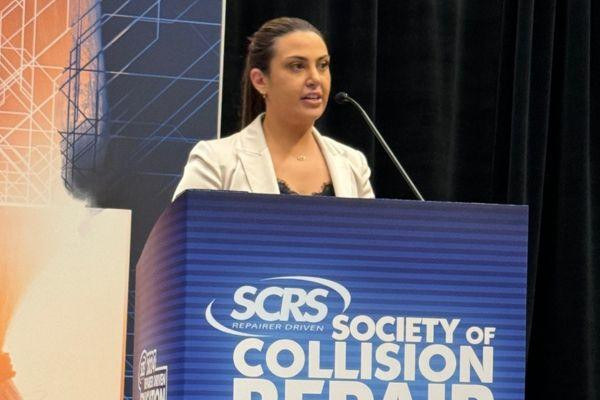 Molly Mahoney.
Molly Mahoney.
Collision Engineering was formed as the result of a collaboration with Ranken Technical College and the Enterprise Mobility Foundation. Mahoney said it was born out of the need to innovate, to move beyond traditional rotational training models and rethink how people are brought into the collision industry.
“We reimagined education not as an isolated experience, but something directly integrated with the real world,” she said.
During her presentation, Mahoney explored how the program’s vision combines hands-on training, innovative educational models and industry collaboration.
She said that in recent years, the shortage of skilled technicians has become a global crisis, and the industry is at a pivotal point.
According to Mahoney, the shortage of skilled technicians isn't just a problem for the industry; it's a reflection of a much larger issue -- the current system is out of step with the future.
“The power of collaboration between industry, education and community is our solution,” she shared. “Together, we can create not just a response but a transformation for the future.”
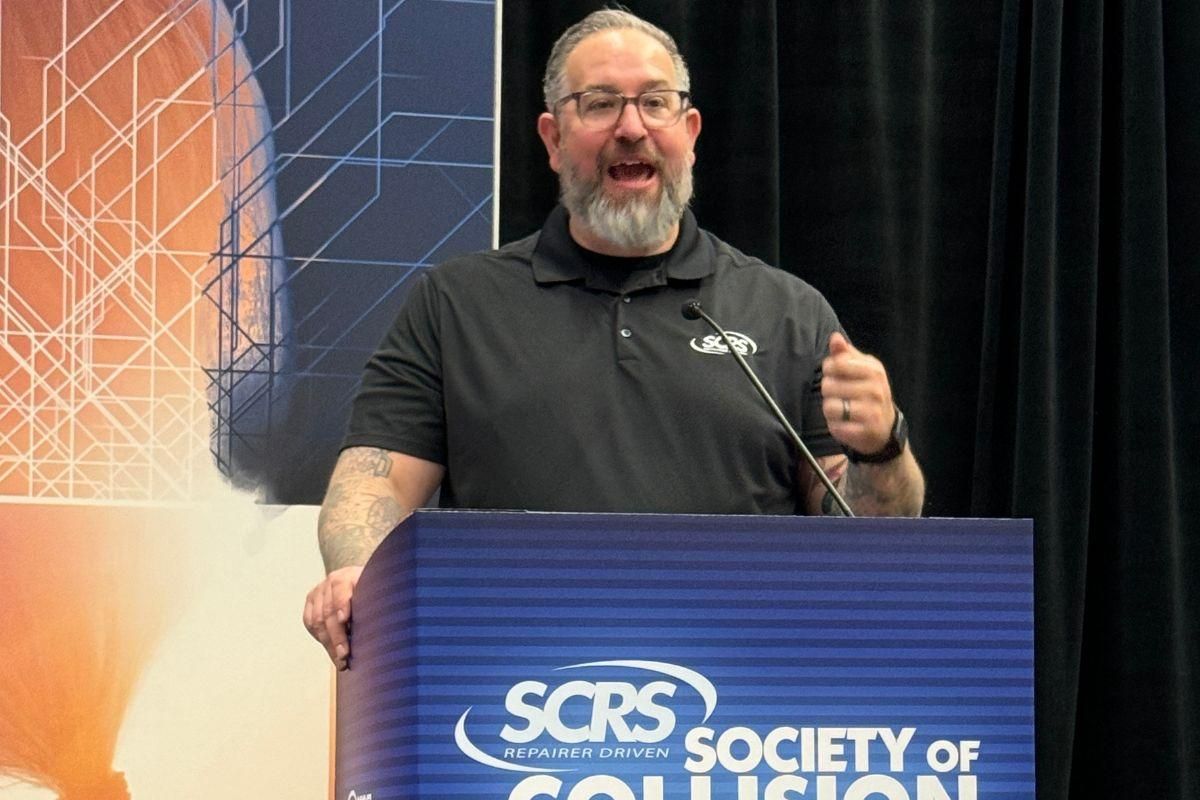












Stacey Phillips Ronak